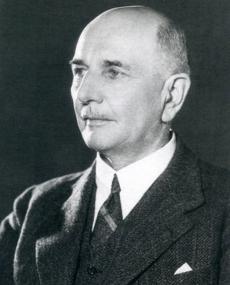
Geologist. Discovered tin near Pretoria, Transvaal (now Gauteng).
Dr Merensky's most important discoveries were platinum in the Bushveld Complex and diamonds in Namaqualand.
Dr Hans Merensky was born on 16 March 1871 in Botshabelo. His father was the famous missionary and writer, Alexander Merensky. Hans studied geology and mine engineering at the State Academy of Mining and the University of Berlin, Germany, and passed with honours.
He completed his practical training in coal mines in the Saar region and in Silesia and began work for the Department of Mines in East Prussia. In 1904 Dr Merensky came to South Africa on leave from his employers. He wanted to conduct some geological surveys and travelled through the area that used to be known as the Transvaal.
Dr Merensky discovered tin near Pretoria and reported to the Premier Diamond Mine regarding possible mining prospects. He did work for several mining companies and Friedlander and Company sent him to Madagascar to investigate a reported discovery of gold, which he proved to be fake. He decided to resign from his job in Germany and moved to Johannesburg where he became a successful consulting geologist.
In 1909, after visiting the diamond fields in Namibia, he predicted that diamonds would be found all along the West coast and south of the Orange River, a point on which many of his colleagues disagreed with him. In 1913 Dr Merensky went bankrupt as a result of the Depression. During World War I he was called up and stationed in a camp near Pietermaritzburg in Natal (now KwaZulu Natal).
After the war the mines no longer needed consulting geologists as they had decided to employ their own geologists on a permanent basis and Merensky would have starved had it not been for the occasional support of Sir George Albu. In 1924 some prospectors put him on the track of some platinum deposits near Lydenburg, where he eventually discovered a 48 km reef. This reef, which was named after him, and other geological discoveries made him a very prosperous man.
In 1926 he visited Germany and was abroad when diamonds were discovered in Namaqualand. He had done some previous studies regarding diamonds and had formed an association between the previous stones and certain fossilised shells. When these shells were found at Alexander Bay followed by an enormous amount of pure diamonds the area was reserved and Merensky received 1 250 000 pounds.
Following this amazing find he decided to become a farmer and settled down on Westfalia, a farm close to Duiwelskloof in the north of the old Transvaal. He still did geological research and planted plantations in order to develop new ways to prevent erosion. He also experimented with new grass types, researched fruit, researched animal breeding, built a large dam and produced timber. These experiments cost a great deal of money, but contributed hugely to the development of South Africa.
Dr Merensky never stopped prospecting and took part in the research that led to the development of the Orange Free State goldfields. He also found large chrome deposits near Pietersburg and phosphates near Phalaborwa, and established the Phosphate Development Corporation Ltd. (Foskor).
Dr Hans Merensky was a very generous man and instead of building himself a new house on his farm he donated money to universities, schools, libraries, hospitals, charities cultural organisations and people in need. He was the leader in establishing agricultural schools in South Africa and made it possible for the University of Stellenbosch to create a forestry faculty, which greatly boosted the large-scale forestry industry in South Africa. He died on 21 October 1952 on his farm, Westfalia, and his money was placed in a trust fund to continue his work in the interest of South Africa.